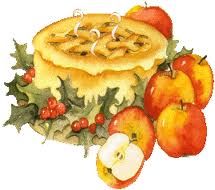Background: As some of you may unfortunately know, this past year I’ve been indulging myself with a musical mid life crisis. I’ve started to learn how to play 5 string banjo.
The short story is this. For just about my entire life there had been this old dusty banjo in the house that no one played. It belongs to my father. In the mid fifties he helped organize a Pete Seeger (a known communist) concert on campus. This means he probably has his very own file folder deep in the Hoover building. My father also has his very own Pete Seeger story but that will have to wait for another blog post. A short while after the concert, inspired by Seeger and other folk artists, my father purchased the least expensive banjo available at Sears. Since he was already making progress learning the guitar he figured the banjo would be easy. After all, it had less strings!
After another short while, frustrated, the banjo was put back in its case to collect dust for five decades. A couple decades in the attic, then about 10 years in the basement, another 10 years below the plant rack in the den next to the LPs we haven’t played since we couldn’t find replacement needles for the old HiFi. Followed by some time in the garage before moving to a storage unit. Except for the few times I’d sneak it out of the case and strum it as a little kid looking for trouble, this specific instrument has had a pretty uneventful life. Until recently at least. Now I annoy people with it for at least 5 minutes every day. I know, I know, 5 minutes a day is not enough to make any measurable progress but I don’t want to drive the people I live with completely insane.
I’m not sure exactly what drew me to rescue the banjo from storage and start playing it at age 46. Maybe it was Seeger visiting Occupy Wall Street. I’m sure that was a factor. I was also a band geek in high school. One of my greatest achievements was making it into the All-State Band playing Small Tuba aka Euphonium. It’s been a long time since I’ve been The Best at anything and I admit to missing the stage and everything that goes along with it. Anyone who says they don’t like the cheers and adulation is just lying. Small Tuba does have its drawbacks. There’s not much you can do with it beyond joining a circus or military band. While a circus band would be loads of fun, the musicians who play in them are world class. And it’s been a quarter century since I’ve played seriously. So I asked myself, why not find a new passion? Why not lead people in a robust chorus of Solidarity Forever & Which Side Are You On? Everybody and their brother plays guitar. But banjo? That would be bad ass cool! I knew where I could find an instrument, and of course the most important factor – it was FREE – just sitting there in storage waiting for me. Enough about my uncomfortable past…
About the Banjo’s uncomfortable past…
The banjo is a four-, five- or (occasionally) six-stringed instrument with a thin membrane stretched over a frame or cavity as a resonator. The membrane is typically a piece of animal skin or plastic, and the frame is typically circular. Early forms of the instrument were fashioned by Africans in Colonial America, adapted from several African instruments of similar design.[1]
The banjo is frequently associated with country, folk, Irish traditional and bluegrass music. Historically, the banjo occupied a central place in African American traditional music, before becoming popular in the minstrel shows of the 19th century. In fact, slaves both were influenced by and influenced the early development of the music, which became country and bluegrass, particularly in regard to the innovation of musical techniques for both the banjo and fiddle.[2][3][4] The banjo, with the fiddle, is a mainstay of American old-time music.
Part of learning a new instrument is learning its’ history. What I meant by its past being uncomfortable, is not the banjo’s fifteen minutes of pop culture fame as the sound track for Appalachian man on man rape in the movie Deliverance (BTW if you’re ever on Jeopardy, the Dueling Banjos tune is traditionally performed with banjo and guitar, not two banjos). I’m talking about the history of the banjo, heavily promoted at the time as “The American Instrument“, and its association with American blackface minstrel shows of the 19th and early 20th century. Basically you have an instrument with African roots, being popularized by white American performers in blackface, then later black Americans in blackface, using exaggerated stereotyped… well you can understand why the instrument lost a great deal of popularity over the 20th century.
So how are actual black American minstrel show artists and performers viewed? As you might imagine, their work has a long history of being celebrated and vilified. Even now there are black banjo performers getting called Uncle Toms in the comment threads on You-Tube.




 Mince pie is a old holiday tradition that can be traced back to 13th century when European crusaders returned from the Middle East with recipes for meats, fruits and spices. Mincing was a way of preserving meats without salting or smoking. The pie has been served at royal tables and, at one time, was banned by the Puritans since it was a symbol of the Pagan Christmas celebration.
Mince pie is a old holiday tradition that can be traced back to 13th century when European crusaders returned from the Middle East with recipes for meats, fruits and spices. Mincing was a way of preserving meats without salting or smoking. The pie has been served at royal tables and, at one time, was banned by the Puritans since it was a symbol of the Pagan Christmas celebration.